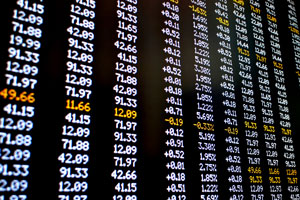Why Did Markets Drop after the FOMC Meeting?

At its September meeting, the Federal Open Market Committee (FOMC) decided to maintain the federal funds rate in a range of 0 percent to 0.25 percent. Many analysts credited or blamed an incipient slowdown in China for contributing to this decision. But markets generally expected no change in the target. Federal funds futures contracts had implied only a 25 percent chance of a rise of 25 basis points in the federal funds rate. That is, the actual meeting outcome was slightly more accommodative than the market expectation.
Stock markets generally react slightly positively to decisions that announce more accommodative monetary policy. For example, a 2005 paper found that a surprise decrease of 25 basis points in the federal funds target would be expected to raise equity prices by about 1 percent.1 Thus, a removal of a 25 percent chance of a 25-basis-point increase would tend to increase equity prices by a modest 25 basis points.
After the FOMC Meeting
Markets appeared to react negatively to the FOMC decision, however. From the Thursday close to the Friday close—after the Thursday FOMC meeting—the S&P 500 Index fell by about 1.6 percent. Some observers expressed puzzlement that the S&P 500 would fall after a relatively accommodative monetary policy decision.
One interpretation of this bearish reaction is that the markets feared that the accommodative FOMC decision indicated that the Federal Reserve was expecting poor global growth, which would tend to drive down stock prices in the future. Of course, this interpretation would require that private investors believe that the Fed has significantly superior information about the economy. There is little evidence that the Fed has such an informational advantage.
Alternatively, markets may have seized on any information to justify a correction to an overvalued market. The S&P 500 had already fallen by almost 6 percent from mid-August to mid-September, and the S&P 500’s price-earnings ratio—a measure of the market’s price to its fundamental value—was still fairly high (around 20, compared to the historical average of about 15.5).2
Much Ado about Nothing?
Another possibility, however, is that Friday's downturn was much to do about nothing and had nothing directly to do with monetary policy. The 1.6 percent price decline was a fairly unremarkable event for the S&P 500. The S&P 500 rose or fell by at least 1.6 percent on about 14 percent of days from 2005 to 2015.
One would expect that the monetary policy shock on Thursday would have a fairly small impact compared to this daily variation. Bernanke and Kuttner’s (2005) estimates imply that Thursday's monetary policy shock would raise the S&P 500 by only 25 basis points, which is a very modest amount compared to its typical daily variation. In other words, the normal variation in the stock market suggests that perhaps one should not read too much into Friday’s bear market: markets go up, and markets go down.
Notes and References
1 Bernanke, Ben S.; and Kuttner, Kenneth N. “What Explains the Stock Market’s Reaction to Federal Reserve Policy?” Journal of Finance, 2005, Vol. 60, Issue 3, pp. 1221-1257.
2 The P/E ratio was taken from www.multpl.com.
Additional Resources
- On the Economy: How Is Normalization of Monetary Policy Going to Work?
- On the Economy: Liftoff and the Natural Rate of Interest
- On the Economy: Has the Phillips Curve Relationship Broken Down?
Citation
Christopher J. Neely, ldquoWhy Did Markets Drop after the FOMC Meeting?,rdquo St. Louis Fed On the Economy, Sept. 28, 2015.
This blog offers commentary, analysis and data from our economists and experts. Views expressed are not necessarily those of the St. Louis Fed or Federal Reserve System.
Email Us
All other blog-related questions


